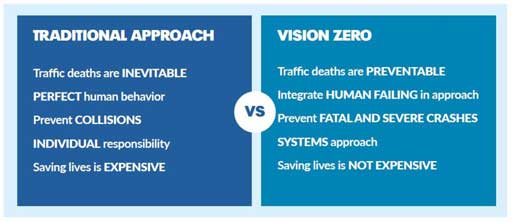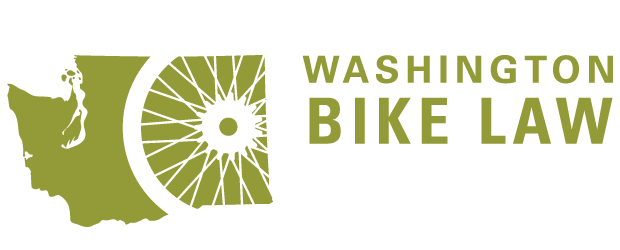Should I call the police after a bicycle accident?
It depends on the situation. If you think a driver might be intoxicated, yes. Otherwise, it's hard to say. Some police in Seattle and other cities in Washington State are openly hostile to bicyclists, while others are genuine bicycling advocates. Far too many officers misunderstand the rules of the road for bicyclists and others try to educate drivers. Unlike a lawyer, you cannot select the responding police officer.
Having a police report can be helpful if the officer believes the driver is at fault. On the other hand, the responding police officer does not make the final fault determination. Washington Bike Law has represented many bicyclists who were issued tickets by police then later recovered 100% from the un-cited drivers.
Although Washington Bike Law does not represent people for traffic tickets, Washington Bike Law's lawyers have contacted prosecuting attorneys on multiple occasions and have convinced them to drop cases against obviously wrongly-cited bicyclists.
Washington Bike Law advocates for updated rules of the road that better protect everyone on the road and are clear to police, drivers, bicyclists and pedestrians. Until the rules of the road are clear to everyone, it remains difficult to say whether to call the police after a bike crash.
I was "doored" on my bike. Is it my fault for riding too close to a parked car?
Probably not. While it's always a good idea to leave room for vehicle doors to open, we have a law in Washington State that says, "No person shall open the door of a motor vehicle on the side adjacent to moving traffic unless and until it is reasonably safe to do so, and can be done without interfering with the movement of other traffic, nor shall any person leave a door open on the side of a vehicle adjacent to moving traffic for a period of time longer than necessary to load or unload passengers." (RCW 46.61.620)
While there is a general duty to keep a "proper lookout," a driver should look before opening a vehicle door and is in the best position to prevent a hazardous condition from occurring.
Do I have a claim even if a vehicle never hit me or my bicycle?
Quite possibly. Many people mistakenly believe that there has to be physical contact between a bicyclist and a motor vehicle for the driver to be liable. This is not true. The attorneys at Washington Bike Law have obtained settlements and verdicts against drivers who caused bicyclists to crash but never actually hit them.
Washington Bike Law has also successfully represented bicyclists injured on unsafe roadways where no other vehicle was involved. For instance, Bob Anderton represented multiple bicyclists who were injured on a dangerous diagonal railroad crossing under the Ballard Bridge in Seattle (Burke-Gilman's Missing Link) and tried to resolve the issues without a lawsuit. In 2004 Anderton Law Office obtained the first verdict against the City of Seattle for its negligence there (King Case No. 03-2-27338-4SEA).
Washington Bike Law has litigated multiple claims involving wheel-swallowing parallel drain grates and worked to eliminate this safety hazard in Seattle. Years later, as suggested by Washington Bike Law, the City began inventorying and replacing the grates.
For five years Washington Bike Law investigated, attempted negotiations, and then litigated claims against the City of Seattle on behalf of some of the many bicyclists who have been injured on the South Lake Union Streetcar tracks. (Seattle PI News Coverage)
In response, when the City expanded the streetcar system, rather than creating another area the city's own employees termed "fatally flawed for bicyclists," it chose to improve conditions for bicycling, including a physically-separated bikeway, bike lanes, and "bike friendly" drainage grates. (City of Seattle) Unfortunately, while improved, the streetcar tracks continue to create a hazard for bicycles. (KOMO News coverage)
For years Washington Bike Law investigated, attempted negotiations, and then litigated claims against the City of Seattle on behalf of some of the many bicyclists who have been injured on the South Lake Union Streetcar tracks. (Seattle PI News Coverage) In response, when the City expanded the streetcar system, rather than creating another area "fatally flawed for bicyclists," it chose to improve conditions for bicycling, including a physically-separated bikeway, bike lanes, and "bike friendly" drainage grates. (City of Seattle)
Can I make a claim if I was hit by a car while riding my bicycle on the sidewalk?
Almost certainly. Bicyclists are allowed to ride on the sidewalk in Seattle. The rules vary in other cities, but there is likely at least some negligence on the part of a driver when a crash occurs on the sidewalk.
What is the difference between a Sharrow and a Bike Lane? What about Cycle Tracks and Protected Bike Lanes?
A Sharrow is a shared lane marking and is usually marked by a bike image with two upside-down "V" marks on top of it. A Bike Lane (or Bicycle Lane) is usually marked by a bike image and a painted line between a lane for all traffic and the bike lane. A Sharrow provides little, if any legal protection for bicyclists. The City of Seattle advises both drivers and bicyclists to follow the rules of the road as if there were no sharrows.
Cycle Tracks are another term for Protected Bike Lanes. Cycle Tracks are not for racing, but the term is sometimes used for two-way Protected Bike Lanes. Protected Bike Lanes are physically separated from motor vehicle traffic and provide both legal protection for those riding in them and some physical protection, albeit usually just a curb or plastic cones. In any bike lane, motor vehicle drivers have a duty to yield to bicyclists. Washington Bike Law is working to update and clarify the Rules of the Road regarding new bike facilities.
Is it illegal to have a blinking headlight on your bike?
Flashing lights are illegal in many European countries. It's less clear in Washington. RCW 46.61.780 (1) reads:
Every bicycle when in use during the hours of darkness as defined in RCW 46.37.020 shall be equipped with a lamp on the front which shall emit a white light visible from a distance of at least five hundred feet to the front and with a red reflector on the rear of a type approved by the state patrol which shall be visible from all distances up to six hundred feet to the rear when directly in front of lawful lower beams of head lamps on a motor vehicle. A lamp emitting a red light visible from a distance of five hundred feet to the rear may be used in addition to the red reflector. A light-emitting diode flashing taillight visible from a distance of five hundred feet to the rear may also be used in addition to the red reflector.
RCW 46.37.215 suggests that you can have a flashing front light and maybe even a white flashing light, but RCW 46.37.280(3) can be read to say that you can't.
Regardless of the law, you don't want to get hit by an inattentive motorist, and flashing lights may help. If you are hit on your bike while using a flashing light, that shouldn't be used against you, unless your light actually blinded an oncoming driver. If you have a flashing light that seems to annoy others, the best practice is to only use it during the day.
What if a bike crash is my fault?
You still may have some protection against loss. If you are injured, your health insurance should pay your medical bills, though you may need to show that there is no other insurance available (including PIP).
If you are involved in a collision with a motor vehicle, there may be coverage for your medical bills and some household expenses through the driver's PIP coverage, even if you are fully at fault for the crash.
If you have homeowner's or renter's insurance you should be protected against the claims of another person. Your insurer should either pay the claim or provide you with a lawyer if you are sued.
Can a bicycle collision be partially my fault?
Yes. Washington is a comparative fault state. This means that, even if a bicycle crash is partially your fault, you can recover the portion of your damages you prove are the fault of the driver or other defendant.
What's the difference between a crash and an accident?
Many people use the word "accident" when describing crashes, but this word makes them seem inevitable, when they are actually preventable. While Washington Bike Law tenaciously represents individuals after they have been injured, we also work to prevent crashes and make our roads safer for everyone.
Washington Bike Law is committed to using Vision Zero strategies to eliminate all traffic fatalities and severe injuries, while increasing safe, healthy, equitable mobility for all.

Vision Zero commitment begins with realizing that crashes are not accidents. Take the pledge to say crash not accident.
